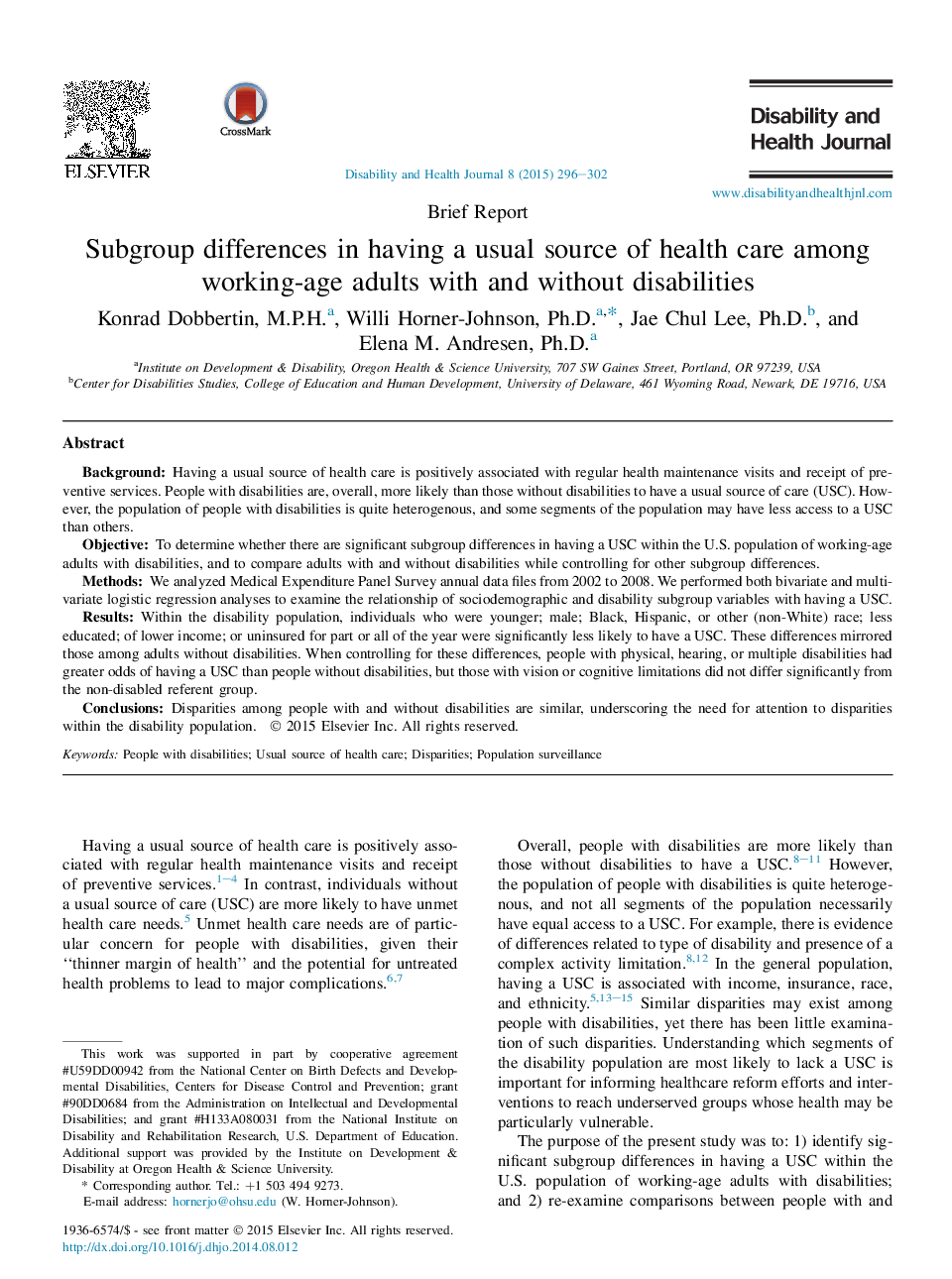| Article ID | Journal | Published Year | Pages | File Type |
|---|---|---|---|---|
| 4197168 | Disability and Health Journal | 2015 | 7 Pages |
BackgroundHaving a usual source of health care is positively associated with regular health maintenance visits and receipt of preventive services. People with disabilities are, overall, more likely than those without disabilities to have a usual source of care (USC). However, the population of people with disabilities is quite heterogenous, and some segments of the population may have less access to a USC than others.ObjectiveTo determine whether there are significant subgroup differences in having a USC within the U.S. population of working-age adults with disabilities, and to compare adults with and without disabilities while controlling for other subgroup differences.MethodsWe analyzed Medical Expenditure Panel Survey annual data files from 2002 to 2008. We performed both bivariate and multivariate logistic regression analyses to examine the relationship of sociodemographic and disability subgroup variables with having a USC.ResultsWithin the disability population, individuals who were younger; male; Black, Hispanic, or other (non-White) race; less educated; of lower income; or uninsured for part or all of the year were significantly less likely to have a USC. These differences mirrored those among adults without disabilities. When controlling for these differences, people with physical, hearing, or multiple disabilities had greater odds of having a USC than people without disabilities, but those with vision or cognitive limitations did not differ significantly from the non-disabled referent group.ConclusionsDisparities among people with and without disabilities are similar, underscoring the need for attention to disparities within the disability population.
